- Home
- Conn Iggulden
The Dangerous Book of Heroes Page 14
The Dangerous Book of Heroes Read online
Page 14
Two-men summit teams were considered to have the best chance. The first assault on the summit was by Charles Evans and Tom Bourdillon. They made it to within a few hundred feet of the top when their oxygen failed. Without warning, they were suddenly strangling in air too thin to breathe, and they had to return to the lower camp.
On May 28, an advance party went up to carry equipment to the highest camp possible. In that way, they could prepare the path for Hillary and Tenzing, who were the least exhausted pair. Hillary and Tenzing carried some fifty-six pounds of supplies up to what would be called Camp IX—about halfway between Advance Base Camp and the summit. With three other men—Alfred Gregory, George Lowe, and Sherpa Ang Nyima—they rested as best they could. In a cramped tent, they slept for four hours and woke at dawn to find that the weather had cleared. The temperature was around -13°F (-25°C), which made windchill of the utmost importance. Winds on Everest regularly gusted up to eighty miles per hour and were a constant, deadly threat.
Both Hillary and Tenzing carried cylinders of oxygen and other equipment: fifty to sixty-three pounds for each man. The plan was for Gregory, Lowe, and Ang Nyima to go first and cut ice steps as high as they could, allowing Tenzing and Hillary to make a fast ascent and perhaps push on to the very top.
Hillary and Tenzing climbed quickly, joining the first party on a ridge at 27,900 feet. There they found the tattered remnant of the Swiss tent from where Tenzing himself had tried for the peak the year before. That experience would prove vital, as he was able to guide the team to the best route.
Their trail-breaking work done, Lowe, Gregory, and Ang turned back. After cutting steps in ice all day, they were exhausted, but they had given Hillary and Tenzing a chance to make the summit.
To preserve oxygen for the attempt, the two remaining men put away their breathing apparatus, gasping without it, to make a camp for the night. They pitched a tent, using only their weight to hold it in place. Tenzing made soup while Hillary checked the oxygen supplies. He had less than the ideal amount, but the first attempt by Bourdillon and Evans had abandoned oxygen cylinders even higher, and they hoped to find those and use them to get back down alive. Before they slept, Hillary and Tenzing ate sardines, tinned apricots, biscuits, honey, and jam, as well as drinking hot water with lemon crystals and sugar to ward off dehydration. Hillary found that his boots had frozen solid and had to cook them on a Primus stove to soften them.
In the morning they hoisted the heavy oxygen tubes onto their shoulders. The day was bright and still, and they could see the South Summit ahead of them. Making good speed, they climbed a ridge toward it, locating the abandoned oxygen cylinders on the way. They passed the cut steps and reached the South Summit by 9 A.M. on the twenty-ninth. A virgin ridge led onward, with a ten-thousand-foot drop along one edge. Hillary began to cut new steps in the snow, ascending in forty-foot stages. Eight thousand feet below them, they could see the Advance Base Camp as they climbed. At one point, Tenzing’s oxygen tubes froze solid and Hillary freed them when he saw the Sherpa growing weak. There was no margin for error of any kind.
They had to halt at a smooth forty-foot cliff of rock, still known today as the Hillary Step. Hillary said afterward that it would have been an interesting challenge to a group of expert climbers in England’s Lake District, but at that height it seemed impassable. He found a place where he could wedge his body into a crack between the rock and solid snow and heaved himself up and onto a ledge at the top. Tenzing followed on the rope and began to cut steps once more as the ridge went on.
They pushed themselves to the limit of endurance and thought they had reached the top time and time again, only to find more to do. The “false summits” were heartbreaking. Slowly and painfully, they cut steps and trudged upward. At 11:30 A.M. they stood on top of the world, the first men ever to stand on that spot. They thumped each other on the back and grinned.
Tenzing did not know how to work the camera, so Hillary took three pictures of him standing on the summit. He held an ice ax aloft, with the flags of the United Nations, Britain, Nepal, and India fluttering from it. Tenzing made an offering to the gods of the summit, burying a bar of chocolate and some biscuits. John Hunt had given Hillary a small crucifix to take to the top, and he placed it beside the other offerings. They also looked for traces of Mallory or Irving, as the bodies were still missing at that time, but saw no sign of them.
Exhausted as they were, they could not tarry for long, even for the best view on earth. They remained on the peak for just fifteen minutes before beginning the descent, moving as quickly as possible to reach the oxygen dump before their own supply ran out.
Copyright © 2009 by Graeme Neil Reid
Hillary and Tenzing made it back to a lower camp and were greeted by George Lowe, carrying emergency oxygen and a hot lemon drink. They were too exhausted to say much, though Hillary managed: “Well, George, we knocked the bastard off.” The following day they climbed down to the Advance Base Camp and the rest of the team came out to see if they had been successful. George Lowe gave them the thumbs-up and waved his ice ax at the summit. The highest mountain on earth had been conquered at last. The job was done and Edmund Hillary and Tenzing Norgay became famous around the world. The French team next in line to make the attempt were, frankly, gutted.
News reached England in time for the coronation of Queen Elizabeth II in June 1953. Her husband, the Duke of Edinburgh, had been the patron of the expedition, and the queen took a personal interest. Hillary was made a Knight Commander of the British Empire (KBE). In his twilight years, he was also made a member of the Order of the Garter, an honor completely in the queen’s discretion. Only the reigning monarch, the Prince of Wales, and twenty-four “companions” hold the honor at any one time. Hillary returned to England on many occasions to attend the annual service in Saint George’s Chapel, Windsor.
Tenzing Norgay was given the George Medal by Queen Elizabeth. He was honored by both India and Nepal and became director of the Himalayan Mountaineering Institute in Darjeeling. He lived until 1986, dying at the age of seventy-one. His son climbed Everest in 1996.
Edmund Hillary was just thirty-three when he stood on the peak of Everest. Though only two men made the summit, he always praised the teamwork that had made that final push possible. He also never revealed whether he or Tenzing had stepped onto the peak first. As far as Hillary was concerned, it just didn’t matter. He went on to climb ten other peaks in the Himalayas and made a successful journey to the South Pole. Much of his later life he spent creating and working with the Himalayan Trust in Nepal. Nepalese people form the Gurkha regiments that have been Britain’s allies for almost two hundred years, and Hillary’s trust built bridges, hospitals, airstrips, and almost thirty schools there.
He died on January 11, 2008, aged eighty-eight. In April of that year, Queen Elizabeth held a final service for him in Saint George’s Chapel. Outside, Gurkha soldiers stood guard for the last time as the great man was honored and remembered.
Recommended
The Ascent of Everest by John Hunt; includes the chapter
“The Summit” by Edmund Hillary
The Abolition of Slavery in the British Empire
Sharp, Clarkson, Wilberforce, and Buxton
There is today a vast amount of misinformation and misunderstanding about the history and origins of slavery. Slavery is, unfortunately, as old as mankind itself. The oldest oral histories, cave drawings, and written histories of every race include slavery—in Africa; throughout Asia and Asia Minor; Europe; North, Central, and South America; India; and Oceania. It’s been practiced everywhere from the beginnings of history, when the British Isles were uninhabited marshes and mountains.
The great Indian civilizations of 5000 B.C. traded slaves. All the Middle Eastern and Mediterranean states had slaves. Classical Greek civilization—the so-called “Cradle of Democracy”—was based upon slavery. While Plato and Aristotle debated democracy, less than 1 percent of people had any say in that society, and
50 percent were slaves. Plato’s ideal republic contained slavery, while Aristotle suggested that some peoples were naturally slaves.
The Roman Empire was built on slavery. In every land they conquered, the Romans created slaves, from civilians as well as defeated armies, enslaving Britons in the north, Carthaginians and Egyptians in the south. For a one-hundred-year period B.C., slaves outnumbered freemen by three to one, with almost 21 million slaves.
Meanwhile, in Africa, slavery was already practiced, both locally and in the form of exports to the Middle East. As in every continent, the nations and tribes of Africa waged war among themselves for thousands of years before the Europeans arrived. The defeated of those wars became slaves to their victors and were either worked locally, sold on to other tribes, or used to pay debts and penalties. With the sweeping spread of Islam after A.D. 650, a huge slave trade in Africans was created, trading from sub-Sahara to Muslim North Africa and to the Muslim Middle East. Black slaves were sold by black Africans to Muslim traders for transportation by caravan across the deserts, by boat down the Nile River, and by sea from centers such as Zanzibar to the Arabian Gulf, the Red Sea, and Indian slave ports. In the late 800s, Arab geographer al-Ya‘qubi recorded: “I am informed that the kings of the blacks sell their own people without justification or in consequence of war.”
No figures exist for the number of Africans enslaved this way, but for thirteen hundred years of Islamic slavery, the caravan routes, Nile River, and jungle paths were littered with the bones of dead slaves. During the 1800s, missionary and abolitionist Dr. David Livingstone put the figure at 500,000 dead each year. That trade continues today.
Arab slavers also made raids by sea, to the Canary Islands, Madeira, Malta, Sicily, Spain, Portugal—and the British Isles. Villagers from southern England, Wales, and Ireland were snatched from their homes and sold in markets on the Barbary Coast of North Africa. In the Middle East, Muslim armies raided eastern Europe for Christian slaves, and in Russia they bought slaves captured by the conquering Vikings. Into the 1800s, Turkey, France, Venice, Genoa, Spain, and Morocco sentenced convicts of any nationality to be galley slaves.
Elsewhere, the various civilizations of Central and South America—particularly Aztec, Mayan, and Incan—rose on the backs of slaves. North American tribes were enslaved by their captors, especially the Haida. The Middle Kingdom of China and other Asian nations were slave societies, as were the Hindu and Muslim states of the Indian Subcontinent. Even in Oceania, the fabled South Sea paradise, slavery was practiced, as well as infanticide and cannibalism.
The Atlantic slave trade was begun by Portugal in 1444, when 225 slaves were captured from West Africa and sold in the market at the town of Lagos, on the Portuguese coast. Papal decrees permitted the Portuguese to enslave all unbelievers, and by 1450, 1,000 Africans had been enslaved in Portugal. By 1650, Portugal had enslaved 1.3 million from Angola alone. Meanwhile, Spain introduced African slaves to the Canary and Balearic Islands.
After the discovery of the Americas, Portugal and Spain decided to transport African slaves to their colonies for the new sugarcane plantations. Within a hundred years, the Dutch joined the trade, transporting slaves from West Africa for sale in Brazil, the Caribbean, and its North American colony of New Amsterdam (New York). They were quickly followed by the Danes, French, Prussians, and Swedes.
The first Africans were brought to the English colonies by the Dutch in 1619. They were given the same status as white indentured servants, so that, after ten years, English colonies had black and white freemen as well as black and white slaves. Black freemen also bought slaves; there are records in the U.K. National Archives at Kew of the purchase of white and black slaves in the colonies. Later, African slaves were preferred because three Africans could be purchased for the same price as one white slave. White slaves were more expensive because they could talk, read, and, sometimes, write English. It was simple economics that favored African slaves.
British merchants joined the Atlantic slave trade in earnest in 1663, purchasing African slaves as cheap labor for sugar and tobacco plantations in the West Indian and American colonies. At the same time, Britain also traded white slaves for labor in the colonies.
The white slaves’ sea passage—in conditions similar to those endured by their cousins from Africa—were paid for by the plantation owner. The term of labor was for three, five, or ten years, after which they were supposed to be freed with a small grant of land, although this rarely happened. In Britain a profitable kidnapping trade developed to supply white slaves, and ports became dangerous areas for men, women, and children. Many thousands of British convicts and political prisoners were also transported to the West Indian and American colonies as slaves.
Copyright © 2009 by Graeme Neil Reid
The infamous “triangle” shipping route developed in the eighteenth century and was used by all Atlantic slaving nations. From Europe, ships sailed with tools, hardware, weapons, beads, cloth, salt, rum, and tobacco, which were traded in West Africa for gold, ivory, and slaves—all delivered to the trading forts by Africans from inland as well as the coast. The ships then sailed the “Middle Passage” across the Atlantic to South, Central, and North America and the Caribbean, where the slaves were sold or bartered at auction. The third leg took the ships back to Europe with sugar, rum, tobacco, and cotton. The American slavers began their triangle with cotton, tobacco, and other American products for Europe.
The slave trade was horrific everywhere in the world, particularly from our standpoint of the twenty-first century. Yet the only true judgment that can be made of any event in history is by the standards of those days. Was slavery considered evil in the seventeenth and eighteenth centuries? The answer is no. Slavery was an accepted practice the world over and had been since records began.
The treatment of slaves was also horrific but, in truth, was little different from the treatment of other people in those days. Sir Hans Sloane, the great doctor of the Enlightenment, recorded in 1686 that for severe crimes some slaves in Jamaica had been burned to death. This is almost beyond belief, but death by burning was the statutory punishment for many crimes in Britain and European countries until it was replaced by hanging, garroting, boiling, or guillotining. In Spain and Portugal, Catholic priests burned non-Catholics; suspected witches were burned or drowned everywhere, while the Salem witch executions of Massachusetts are still famous today.
Slaves were placed in wooden stocks for various misdemeanors; so in every town in England there were stocks for punishing miscreants. Slaves were flogged and, sometimes, flogged to death in punishment for crimes; so, too, were soldiers in the army, sailors in the navy, and even the seamen of slave ships. Another punishment was to place slaves upon a treadmill; Oscar Wilde was punished on the treadmill of Reading Jail—in 1895. Slaves were hanged for minor offenses; so, too, were the English, Irish, Scots, and Welsh. The expression “You may as well be hanged for a sheep as a lamb” originated in 1700s Britain when stealing livestock was a capital offense. Many British felons were hanged by chains on gibbets at crossroads, their bodies tarred and left to rot as a warning to others.
Slaves were packed into the cargo spaces of ships during the Middle Passage, averaging about nineteen inches of space each in decks only five feet high; in the Royal Navy each seaman had twenty-two inches of space to sling his hammock but in two layers, one above the other, in decks five feet high. The death rate was higher among the crews of British slave ships than among the slaves. The simple reason is that the slaves were the profitable cargo of the voyage—the more who survived, the greater the profit—while the crew were the loss-making part of the voyage: they had to be paid.
This description is typical:
During the voyage there is on board these ships terrible misery, stench, fumes, horror, vomiting, many kinds of sea-sickness, fever, flux [dysentery], headaches, heat, constipation, boils, scurvy, cancer, mouth-rot, and the like. Add to this want of provisions, hunger, thirst, frost, heat, dampness, a
nxiety, afflictions and lamentations, together with other trouble, as the lice abound so frightfully, especially on sick people, that they can be scraped off the body…. The water which is served out on the ships is often very black, thick and full of worms, so that one cannot drink it without loathing, even with the greatest thirst. When the ships have landed after their long voyage no one is permitted to leave…they must remain on board the ships until they are purchased. The healthy are naturally preferred first, and so the sick and wretched must often remain on board in front of the city for two or three weeks, and frequently die.
The voyage described was in 1750 from Britain to Pennsylvania—carrying white slaves and fare-paying emigrants. Those were brutal days.
So how was the acceptance and business of slavery brought to an end? Who were the heroes who made that amazing leap of moral judgment to declare—after seven thousand years—that slavery was wrong and that the slave trade must be abolished?
The 1600s and 1700s were the Age of Enlightenment in Europe, particularly in England and Scotland. Scientists, philosophers, doctors, writers, and radicals such as Sir Isaac Newton, Robert Boyle, Thomas Hobbes, David Home, Sir Hans Sloane, John Locke, Thomas Paine, Joseph Priestley, and many more questioned, challenged, and changed the accepted order of science, society, government, and liberty. The Rights of Man, equality, and modern democracy were created in Great Britain, so it’s no surprise that the first abolitionists were also British.
Those radicals also questioned the role of religion. Yet it was Christianity, in the form of enlightened Quakers, Anglicans, and Nonconformists, that was the catalyst for abolishing the slave trade and slavery.

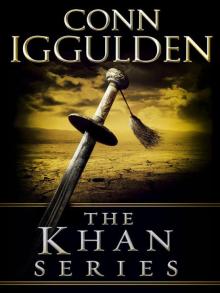 The Khan Series 5-Book Bundle
The Khan Series 5-Book Bundle Tollins 2: Dynamite Tales
Tollins 2: Dynamite Tales Tollins: Explosive Tales for Children
Tollins: Explosive Tales for Children The Field of Swords
The Field of Swords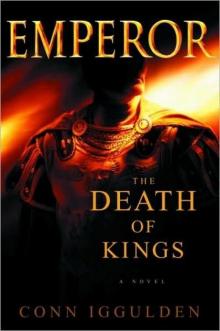 The Death of Kings
The Death of Kings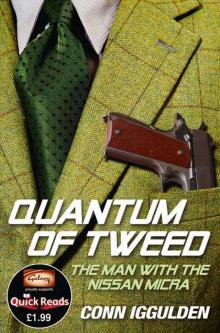 Quantum of Tweed: The Man With the Nissan Micra
Quantum of Tweed: The Man With the Nissan Micra Bones of the Hills
Bones of the Hills Genghis: Birth of an Empire
Genghis: Birth of an Empire The Gates of Rome
The Gates of Rome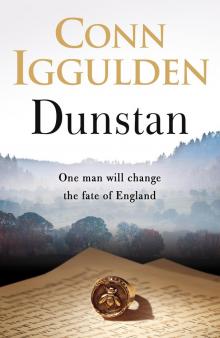 Dunstan
Dunstan Fig Tree
Fig Tree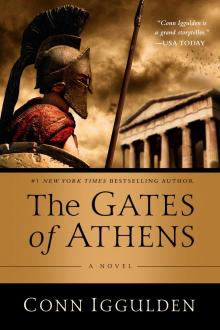 The Gates of Athens
The Gates of Athens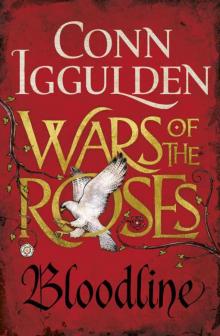 Stormbird
Stormbird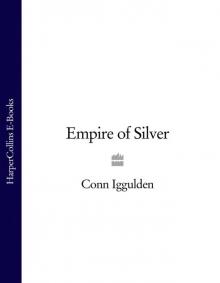 Khan: Empire of Silver
Khan: Empire of Silver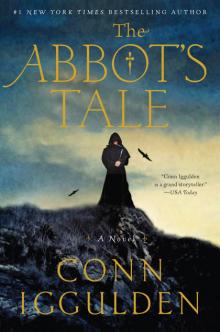 The Abbot's Tale
The Abbot's Tale Gengis: Lords of the Bow
Gengis: Lords of the Bow The Gods of War
The Gods of War Blackwater
Blackwater Ravenspur: Rise of the Tudors
Ravenspur: Rise of the Tudors Wars of the Roses: Trinity (War of the Roses Book 2)
Wars of the Roses: Trinity (War of the Roses Book 2) The Gods of war e-4
The Gods of war e-4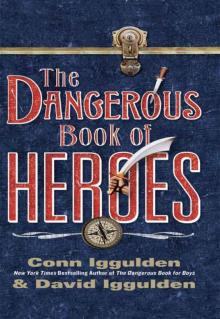 The Dangerous Book of Heroes
The Dangerous Book of Heroes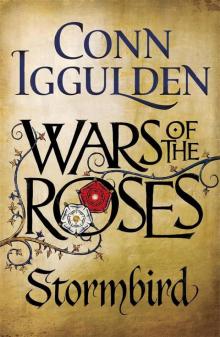 Stormbird wotr-1
Stormbird wotr-1 Emperor: The Death of Kings
Emperor: The Death of Kings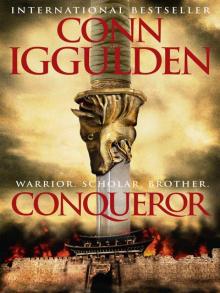 Conqueror (2011) c-5
Conqueror (2011) c-5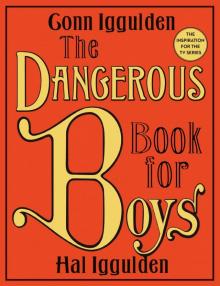 The Dangerous Book for Boys
The Dangerous Book for Boys Genghis Lords of the Bow
Genghis Lords of the Bow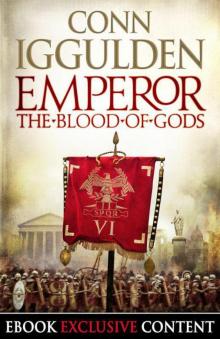 Emperor: The Blood of Gods (Special Edition) (Emperor Series, Book 5)
Emperor: The Blood of Gods (Special Edition) (Emperor Series, Book 5) The Emperor Series: Books 1-5
The Emperor Series: Books 1-5 Lords of the Bow c-2
Lords of the Bow c-2 Lords of the Bow
Lords of the Bow Quantum of Tweed
Quantum of Tweed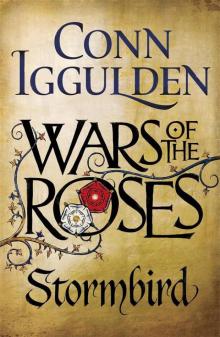 Wars of the Roses 01 - Stormbird
Wars of the Roses 01 - Stormbird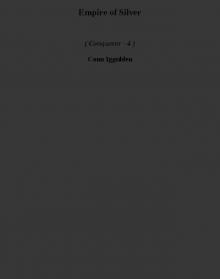 Empire of Silver c-4
Empire of Silver c-4 Birth of an Empire
Birth of an Empire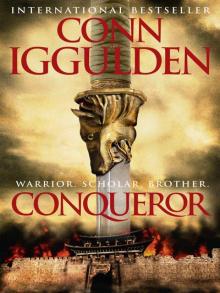 Conqueror (2011)
Conqueror (2011)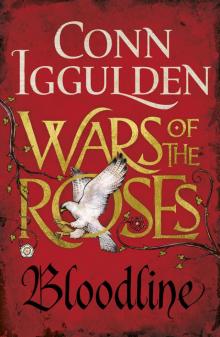 Wars of the Roses: Bloodline: Book 3 (The Wars of the Roses)
Wars of the Roses: Bloodline: Book 3 (The Wars of the Roses) Bones Of the Hills c-3
Bones Of the Hills c-3 Empire of Silver
Empire of Silver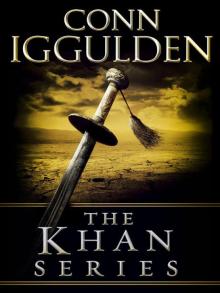 The Khan Series 5-Book Bundle: Genghis: Birth of an Empire, Genghis: Bones of the Hills, Genghis: Lords of the Bow, Khan: Empire of Silver, Conqueror
The Khan Series 5-Book Bundle: Genghis: Birth of an Empire, Genghis: Bones of the Hills, Genghis: Lords of the Bow, Khan: Empire of Silver, Conqueror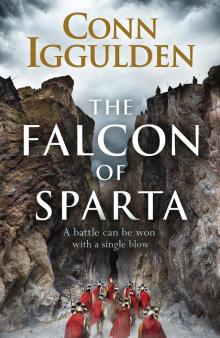 The Falcon of Sparta
The Falcon of Sparta Explosive Tales for Children
Explosive Tales for Children